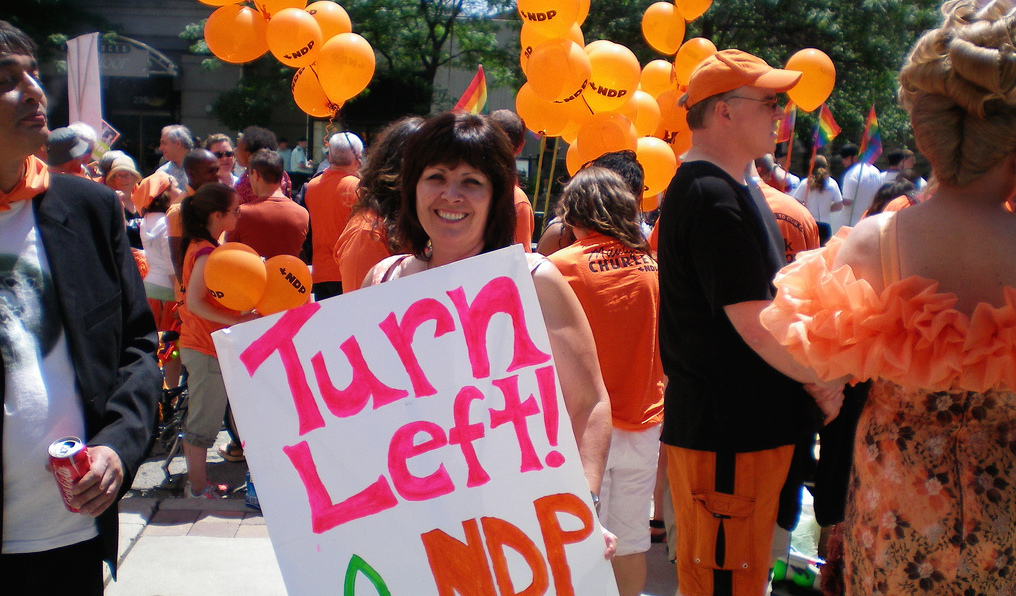Canadians have been poorly governed for too long. The country is ready for some serious change.
The challenge for the five NDP leadership candidates is to spell out what needs to be changed, and inspire confidence that it can be done.
It may be hard to believe, but there have been few major improvements to Canada since the Pearson era. His two minority Liberal governments (1963-65,1965-68) — supported by the NDP — adopted programs such as the Canada Pension Plan, medicare, Canada Assistance Plan (CAP), and the funding of post-secondary education.
The Trudeau minority government (1972-74) showed a willingness to act. Under NDP pressure, it created a national oil company — Petro-Canada — and began to monitor the foreign takeovers of Canadian companies.
In the late 1970s, along with other G7 countries, the Trudeau Liberals changed course, and committed themselves to fighting inflation — creating unemployment to do it.
General austerity has been Canadian government policy ever since.
Tight money and sky-high interest rates provoked a world recession in 1982, and a Third World debt crisis.
While the 2000 Liberal budget reduced taxes on corporations and the wealthy, for the past 40 years, making citizens do with less has been the basic government policy for everybody else.
As a result, Canadians face serious problems: a poor employment outlook, a lack of affordable housing, diminished income support for those in need, and the ballooning of student, personal and family debt.
In the name of fighting deficits, public investment was replaced by privatization — selling the house to pay the mortgage — and access to unemployment benefits was continuously reduced, with the savings used to pay down government debt.
The U.S. jobs strategy is military spending; Canada promises to increase its own spending. Continued wasteful military spending makes little sense, and the NDP leadership candidates need to explain why.
Asked in an interview with the New York Times about NAFTA, Justin Trudeau announced that Canada did not have a Plan B to replace it. This expression of over-confidence in the ability of the Trump administration to re-negotiate NAFTA fairly for all parties is quite surprising.
The so-called benefits to Canada from NAFTA are continuously overstated. Good-paying jobs were lost through the 1988 bilateral Canada-U.S. and the 1994 trilateral Canada-U.S.-Mexico economic integration deals disguised and sold as free trade.
In recent years, U.S. job creation has been limited to part-time, poorly paid, precarious work. The Canadian job market looks much the same; that is, economic integration at work.
In 1995 the Liberals abolished CAP. That withdrew from the provinces the 50 cents Ottawa spent for each welfare benefit dollar and it ended the provincial obligation under CAP to fund all welfare applicants.
We see the results in the homeless camped out in the streets.
When Bill Clinton promised to undo the U.S. safety net, in a NAFTA world, Jean Chrétien copied the U.S. president.
Given reduced access to employment insurance, poor welfare protection, and no jobs strategy, the basic Canadian economic policy post-North American integration became clear: reduce wages by forcing people to work for next to nothing.
The NDP candidates need to articulate an economic strategy focused on domestic job creation, not count on a low Canadian dollar to promote export-led job creation.
Canadian wages, salaries and incomes stagnated during the first trade deal of the Mulroney years (1984-93), under the three Chrétien governments (1993-2003), and the Harper Conservative regime.
Every NDP leadership candidate needs to have a policy on wages, income and income security.
Guy Caron is calling for a guaranteed minimum income. A good program would allow people to refuse poor-paying jobs and force employers to pay a more decent wage.
In the 2015 federal election, astonishingly, the NDP toed the austerity line, promising to balance the budget in every year.
This despite a precipitous fall in the price of oil — a so-called external shock — that pushed GDP into negative figures, signalling the economy was heading to recession.
The next NDP leader has to be committed to ending austerity. The starting point is to be unafraid of the banks and their media allies who for years have been scaring Canadians into believing the country was running out of money.
The reality is that a government with a central bank is not spending-constrained.
When the central bank wants to control private spending, it sells bonds to the private banks, creating savings. When a government wants to spend, the central bank can sell bonds, financing the expenditure.
What Canada has been doing for 40 years is provide benefits to corporations and the wealthy, and restrict spending on basic needs such as child care, dental care, prescription medicine, recreation, and cultural life.
Reversing these spending priorities is what is required.
Explaining how jobs can be created, public services expanded, and how the Canadian quality of life can be improved is what Canadians should expect to hear about in the NDP leadership contest.
Memo to NDP leadership candidates: please articulate what comes after austerity.
Duncan Cameron is former president of rabble.ca and writes a weekly column on politics and current affairs.
Photo: brashley46/flickr




